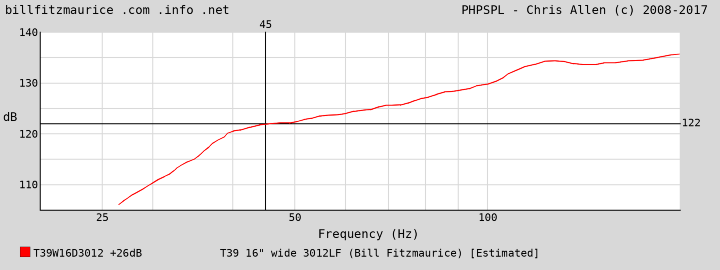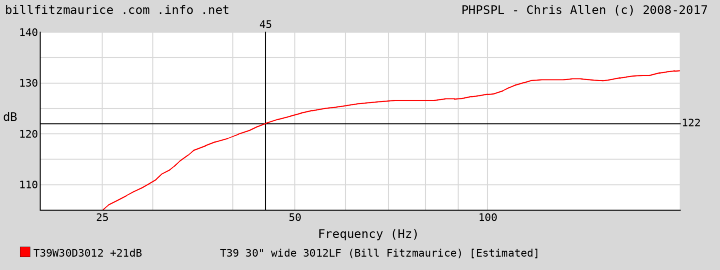Having recently been made aware of the tool to add dB to a cabs response chart, my mind has gone on a numbers binge... again. I don't know what's with my fascination with numbers, I guess they just add up (ba da bum crash)

Anyway, Even though I built it for the rehearsal space, I've used my single 16" 3012LF T39 in an outdoor live situation and it
was sufficient, for the most part. If I pushed the system I could hear that I was into the limiter. So, it was at it's operational limit for that particular use/event.
I have 4 stacks of plywood already cut down to rough cut dimensions to complete four 30" wide, 3012LF, T39's. I also have two 3012LF's on hand and two more on the way. So, essentially, all I have to do is assemble them, which I plan to do along side the DR200 build.
Got slightly off track there. Point is, I started wondering how much power it would take to have a 5 foot stack of four full width T39's in a V configuration to equal the output of the single 16" cab... Specifically at 45Hz.
So, here's the estimated output of the 16" cab at the voltage limit (55v = +25.7764dB... I'll just round that to +26dB).

So, it looks like I get about 122dB max at 45Hz on the limiter with the 16" T39.
Let's see what it would take to equal that output with a four stack of fat boys.

+21 for one cab, subtract 6 for doubling of cabs to two, subtract another 6 for doubling cab count to four, gives me 9dB to be made up with amplification.
Four cabs is 4 watts. 2.83volts/1 watt each. Double that to account for the first 3dB is 8 watts. Double that again for the next 3dB is 16 watts. And double it again for the last 3dB (of 9) is 32watts
total Or, only 8 watts/8 volts to each cab to match the output of the 16" cab at full tilt, 378 watts.
That's pretty amazing.
A couple notes about these calculations and estimates. I'm not taking into account that they're nominally 10 ohm cabs. I'm mathing them as 8 ohm cabs. However, the end product voltage is the same with either calculated ohm value. And the estimates don't include the response smoothing and improved extension of multiple cab coupling. It also doesn't take into account the benefit of v-plating, which should reportedly get about another 3dB sensitivity on the bottom end.
Taking v-plating into account, the numbers drop to only 16 watts total, 4 watts/5.66v per cab.
Again... I find that amazing. It really brings to light the value of small herds of cabs and building as wide as you can transport.